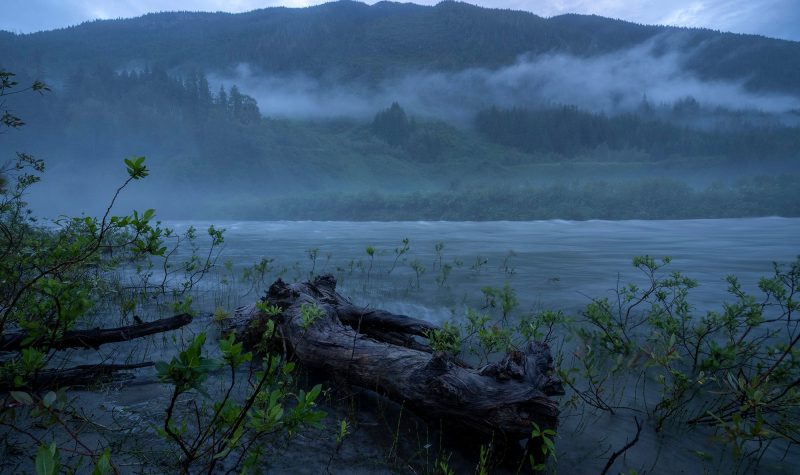Some of the 1000-year old cedars and hemlocks that make up the rainforest of the Incomappleux River Valley are four metres in diametre, and over 250 species of lichen grow in the forest southeast of Revelstoke. The B.C. government is recognizing the significance of the inland, temperate rainforest by protecting 58,654 hectares of it with what's called a conservancy.
Ecosystems around the river headwaters are intact, making the area "globally significant," says Richard Klafki, a program director with the Nature Conservancy of Canada.
There are three inland, temperate rainforests in the world This one runs from the northern Rocky Mountains in central B.C. and Alberta, south into Idaho, Montana and Washington.
"It's a rare, precious area that has been identified before, it's finally going to be preserved as a B.C. Parks conservancy," Klafki said in an interview over the phone from Invermere.
This conservancy designation means the biological diversity will be protected, "for all the social, cultural and ceremony uses of First Nations," Klafki said. The same wording is used on the B.C. government webpage.
That means there can be low impact use in the area, and economic uses, but commercial logging, mining and hydro power generation, other than local run-of-the-river projects, aren't allowed.
The province recognized the significance of the area in 2020 by including 40,194 hectares of the Incomappleux Valley in its plan to preserve old growth forest.
The Valhalla Wilderness Society is a conservation group based in New Denver that has been campaigning the government since 2002 to turn the area into a park.
The Nature Conservancy of Canada worked with the federal and provincial governments to protect the headwaters of the river, which flows south into the Beaton Arm of Arrow Lake.
Along with the conservancy, 17,000 hectares of forest in the lower end of the river valley will be "protected from forestry activity," it says in a news release from the B.C. government.
Interfor, a forestry company based in Vancouver, owns harvesting rights in the valley. The Nature Conservancy of Canada raised money to buy out a portion of the company's tree farm licenses.
Interfor identified the area as one that would be good for a conservancy because the lower end of the valley had already been logged, and the company recognized the upper end is "unique and globally significant," Klafki said.
It's a good example of industry working with the Nature Conservancy of Canada, federal and provincial governments and First Nations to protect an area in a way that benefits communities and doesn't really impact the commercial part of timber harvested, he said.
Listen to an interview with Richard Klafki here:


